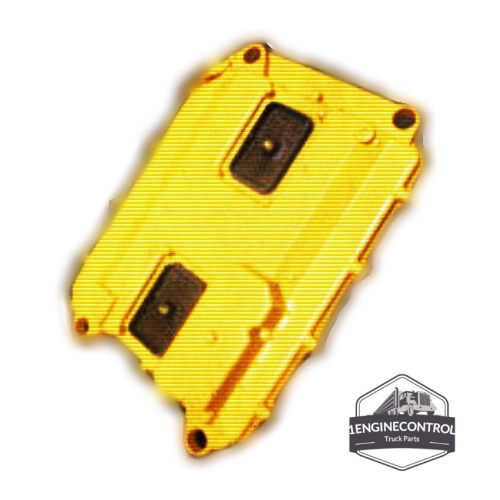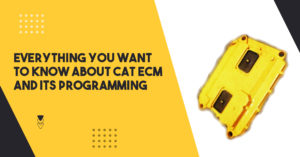The caterpillar ECM or the Engine Control Module is a small electronic unit that is your vehicle’s nervous system. ECM offers split-second monitoring and provides data output for the vehicle’s safety and functionality. This device ensures that a Caterpillar truck or any other vehicle is functioning to its maximum. Engine Control Module also monitors several components like a network of sensors and an emission control system. The CAT ECM is available in various sizes and shapes.
Most of the applications of the engine control module are referenced by the pin configuration for the connectors. Finding out the number of pins generated from the Caterpillar ECM will further determine engine variant and size. The common pin configuration includes 40-pin, 70-pin and 120-pin.
Location of the CATERPILLAR ECM
The caterpillar ECM is located on the engine’s cooler side as it produces a large amount of heat. Engine temperature gets upwards to about 200 degrees Fahrenheit. It is not an ideal environment for the electronic modules to provide the best functions for making the engine perform at its level. The engine control module is located to the side of the engine block using four mounting points. The CAT ECM has two main engine harnesses that run to the connectors. It is better to consult with a licensed technician to remove the old damaged ECM and install the new one.
Programming the CAT ECM
Programming the Caterpillar ECM needs expensive programming and calibrated software. This software includes diagnostic capabilities and an extensive library of calibration files and parameters for each specified engine. As we all know, these control modules are very complex and might look the same; each one of these modules carries a unique set of features and settings. It is very important to know how critical programming and calibrating is important for proper functioning.
How to Find Out That Whether ECM Is Functioning or Not
CAT ECM is like a circuit board connected to the hot engine exposed to grease, heavy vibrations, dirt, and lots of other dust particles. These are the exact different conditions that this module should stay for providing long-term performance. The lower injector pulse and loss of data activity are common symptoms of a malfunctioning ECM. The component failure generally triggers these faults or issues. Oil contamination and water damage are common problems with ECM that are typically visible and apparent.
You should remember that the external faults can largely damage the CAT ECM or any electrical module type. Even the defective sensors and bad battery can also affect the electrical parts for work bad. This, in turn, generates an inconsistent voltage spike to the ECM. If a bad sensor has already damaged the old ECM and the sensor is still malfunctioning, there are chances that it will also damage the new ECM.
Suppose you want to replace your existing ECM and want to replace it with a new one. In that case, you must consult with an experienced team having several years of experience and knowledge on ECM installation and replacement. For this, you can visit the website of 1engine Control, one of CAT ECM’s trusted providers and provides repair services.


